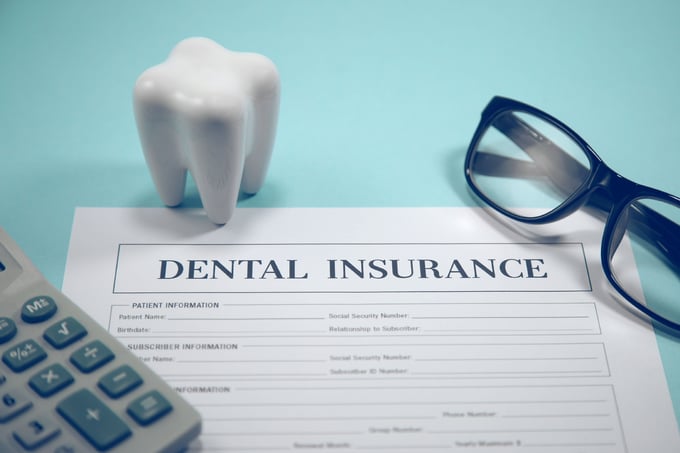It’s hard to provide excellent patient care and stay on top of revenue cycle management for your dentistry simultaneously. And it doesn't matter if yours is a single practice or dental group; you still need to keep it profitable.
Common Revenue Cycle Management Challenges Dental Professionals Face
Here are three of the top revenue cycle management challenges dental professionals face. Any look familiar?
1. Estimating the Correct Patient Portions
As a dental service, you’ll always have to factor in insurance covers in calculating your patient’s bill. Hence, any error in estimating patient responsibility will impact your revenue cycle management. Unfortunately, this will reduce your cash flow.
Insurance regulations and requirements constantly change too, which doesn’t help.
2. Improving Cash Flow With Increased Production
Dental professionals find it pretty difficult to improve their cash flow. And this causes a major revenue cycle management challenge.
Apart from insurance miscalculations, your production rate also affects your cash flow. So, the solution to this challenge is to increase production - a no-brainer.
However, you’ll need accurate production analysis to do this effectively. Unfortunately, many available tools don't generate reports that contain actionable data.

3. Curating a List of Insurance Carriers
Insurance carriers can be a pain to any dental practice because they leave you with little or no room to negotiate their fees.
The obvious solution here is to curate your list of insurance carriers and drop those who don't bring you enough profit or patients. However, this isn’t always the realistic thing to do as it may limit the patient volume in your area if most of them use the same insurance companies.
Tips for Optimizing Your Dentistry's Revenue Cycle Management
Despite the challenges, you can have a thriving dental practice and still manage your revenue cycle efficiently.
The tips below will help you fill your chairs, deliver an outstanding patient experience, and have solid revenue cycle management to keep your dental business profitable.
1. Collect and Verify Patient Information From the Get-Go
Ensure your front desk staff captures all contact and insurance information when your patient walks in. Online patient forms are perfect for this as they can help eliminate data errors during entry. On each subsequent visit, ask the patient if they have changed their contact or insurance information.
Don’t stop there; verify the information too.

2. Carry Out Regular Production Analysis
Production analysis isn’t just for factories. It’s also a key component of revenue cycle management. You need it to know how much revenue you make per patient each year.
For example, if you have thousands of patients with an average production of $125 per patient, getting that number to $250 will double your annual revenue. Identifying your average revenue per patient value can help you determine how to increase your cash flow. You'll also be able to make informed business decisions.
Production analysis will also help you recruit the right staff size. You'll also be able to map out your patient acquisition strategy and investment plans. This way, you can pay closer attention to recare follow-up, offer new services, and manage your revenue.
3. Drop Unprofitable Insurance Carriers
There are smart ways to drop insurance carriers from your list. It’s best to note how much revenue each insurance carrier’s patients bring to your business. You can get an analytic report from your practice management system to show this data.
By doing this, you can make an informed decision on which insurance carriers to drop. This will help you bring in more profitable patients, grow your practice, and optimize your revenue cycle management.
4. Using Good Billing Practices
You’ll often have to charge your patient what’s left of their bill after subtracting their insurance portion. So, you can't always get the entire payment on the spot.
It may take some time for you to get paid for the charges you submit to the insurance carrier. Ensure you submit the correct billing codes for the charges to avoid payment denials.
If you can avoid payment denials, you won't have to waste time resubmitting claims and making unnecessary calls. Payment denials can reduce cash flow, leaving revenue cycle management in a mess - something you want to avoid at all costs.
Also, send out patients' billing statements early. This will increase your chances of getting paid on time.
5. Understand Your Data
Having robust reporting capabilities in your practice management software is great. But you must be able to quickly create and generate reports that contain actionable data.
With the right tools, you can understand your cash flow throughout the year at a glance. This insight can optimize your revenue cycle management. It can also show you the best time to buy supplies based on the overhead target you establish at the start of each year.

6. Effective Patient Engagement
How can patient engagement affect your revenue cycle management?
Sometimes, you need to remind your patients about recare appointments. They may also hesitate to come in for a procedure because they have questions. Sometimes, they need to change their appointment date to accommodate an unforeseen event.
You'll need an effective system to engage your patients in situations like the ones above, so you don't leave money on the table.
Optimize Your Dentistry's Revenue Cycle Management with Curve SuperHero™
The health of your dental practice goes hand-in-hand with your revenue cycle management. So, if you don’t have a solid grasp on the profitability of your business, the best time to fix it is now.
Curve SuperHero helps you fix your revenue cycle management with accurate standard reports you can customize as you wish. Its reports are GAAP accounting compliant, so you can be sure they're accurate. What's more, Curve SuperHero generates these reports fast!
You can automate reminders with Curve GRO™, Curve SuperHero’s patient engagement feature. This tool lets you reduce outbound phone calls and simplify other key front office tasks. This way, you can save time and money.
Schedule a private demo to learn how Curve can help you optimize your dentistry’s revenue cycle management.




